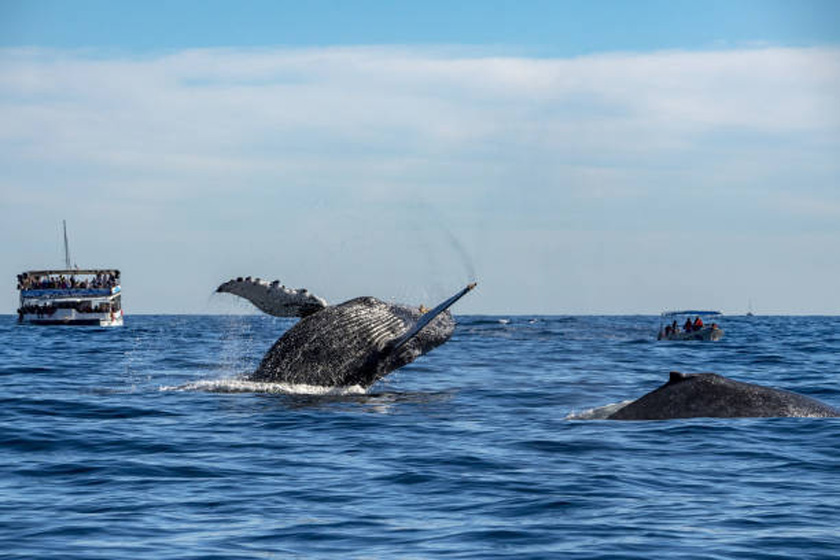Montauk, New York, is one of the best places to watch whales on the East Coast of the United States. Whether you’re a seasoned wildlife enthusiast or trying whale watching for the first time, Montauk offers unforgettable encounters with these gentle giants. In this guide, I’ll help you discover the best months for whale watching in Montauk, the whale species you’re likely to see, tips for an eco-friendly adventure, and more.
Key Takeaways
- June to October is the best time to see whales in Montauk, with July and August being the peak months for sightings.
- Common sightings include humpback whales, minke whales, fin whales, and dolphins.
- Early mornings and late afternoons often offer calmer seas and better lighting for whale watching.
- Montauk’s location at the confluence of the Atlantic Ocean and Long Island Sound provides ideal feeding grounds for whales.
- Choose a reputable tour operator, bring binoculars and a camera, and plan your trip during peak season.
- Support responsible tour operators, reduce plastic waste, and consider supporting whale conservation organizations.
When Is the Best Time for Whale Watching in Montauk?
The best time to see whales in Montauk is between June and October. This is when humpback, minke, and fin whales flock to the waters around Montauk in search of food. If you’re hoping for a memorable experience, I recommend booking a whale watching tour during this season.
June often kicks off the excitement with the arrival of the first humpback whales, while July and August are the peak months for whale activity. During this time, you’re almost guaranteed to spot at least one species. By October, the whales begin their migration south, but sightings can still be spectacular.
To truly understand the best time for whale watching in Montauk, it helps to break down the season month by month. Here’s what you can expect:
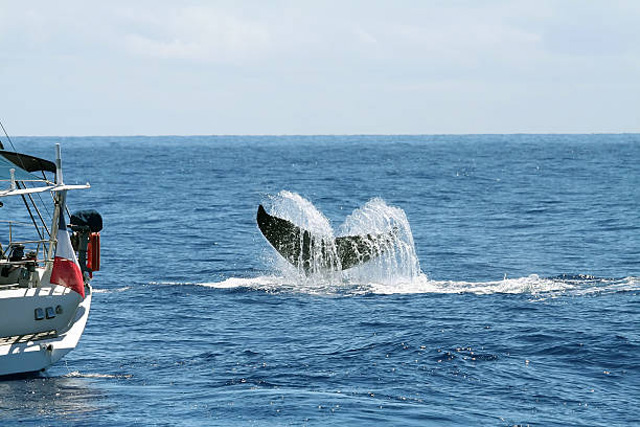
Detailed Seasonality
June
- What to Expect: This is the start of the best months for whale watching in Montauk. Humpback whales, which are among the most commonly sighted species, begin to appear as they follow schools of baitfish like herring and mackerel. Sightings are usually less frequent than in peak months but still impressive.
- Tips for Visitors: Dress warmly, as early summer mornings on the water can be cool. Bring binoculars for better sightings since whales might still be scattered.
July and August
- Peak Season: These are the best months for whale watching in Montauk. The waters are teaming with life, and whale sightings are almost guaranteed. In addition to humpback whales, you’re likely to see fin whales and the occasional pod of dolphins. These months are also ideal for catching a whale breaching or tail-slapping.
- Tips for Visitors: Book tours well in advance as this is the busiest time of year. Morning tours often offer calmer waters, while afternoon tours provide stunning lighting for photography.
September
- What to Expect: As summer fades, the waters remain active with feeding whales preparing for their long migrations south. Fin whales, in particular, are commonly spotted, while humpbacks are still present.
- Tips for Visitors: This is a great time to avoid peak-season crowds while still enjoying frequent sightings.
October
- Late Season Highlights: Though whale activity starts to taper off in October, it’s still possible to spot some humpback and fin whales before they migrate. You might need more patience to have sightings, but whale watching can still be rewarding.
- Tips for Visitors: Dress in layers to stay warm on chilly October mornings. Afternoon tours may offer warmer conditions.
What Time of Day Is Best for Whale Watching?
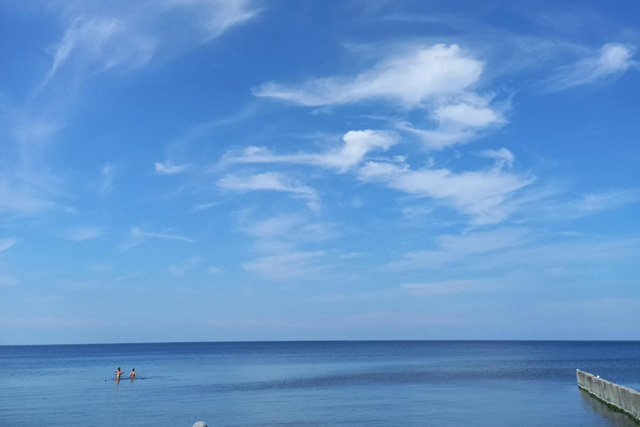
Many people ask, “What time of day is best to see whales?” While the truth is that whales can be active at any time of the day, early mornings and late afternoons often provide optimal conditions for an enjoyable whale watching experience.
During the early morning hours, the waters around Montauk are usually calmer, as winds tend to pick up later in the day. A calm sea not only enhances your comfort but also makes it easier to spot the subtle signs of whale activity, such as spouts, fins, or ripples on the water’s surface. Similarly, late afternoons often bring softer winds and calmer seas. This provides a second prime window for spotting whales.
Another advantage of these times is the lighting. Early mornings and late afternoons offer incredible natural lighting that makes the ocean sparkle and provides a perfect backdrop for photographs. If you’re lucky enough to see a breach or tail slap during these hours, the golden hues of the sunrise or sunset can make your photos even more breathtaking.
It’s also worth considering the habits of the whales themselves. While whales don’t adhere to a strict schedule like humans, they often engage in behaviors such as feeding or socializing during certain parts of the day. Depending on the species, you might find them more active or visible during the morning or afternoon hours as they come closer to the surface to feed or migrate.
Fun Fact!
Some species of whales, like humpbacks, are known to feed in the early morning and late afternoon, which might explain why these times are so rewarding for whale watchers!
Pro Tip!
Arrive a little early for your morning or afternoon whale watching trip. Being on-site early allows you to settle in, find a good seating on the tour boat, and soak in the scenery before the excitement begins.
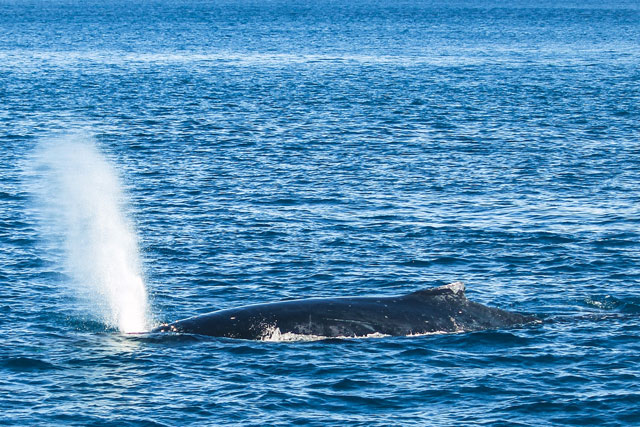
What About Midday?
While early mornings and late afternoons are generally preferred, that doesn’t mean midday whale watching is a bust. Some species of whales are less sensitive to boat traffic or environmental factors and may remain active throughout the day. However, midday outings might come with slightly rougher waters, depending on the weather. The sun’s glare can also make it a little harder to spot activity on the surface, so consider bringing polarized sunglasses to cut through the reflections on the water.
Whether you choose morning, afternoon, or midday for your whale watching adventure, each time of day offers unique advantages and opportunities to connect with these majestic creatures. Remember, the key to an unforgettable experience is to stay patient, keep your eyes on the horizon, and enjoy every moment on the water.
What Types of Whales Can You See?
If you’ve ever wondered, “What whales can I see in Montauk?”, you’re in for a treat! There are several whale species that visit Montauk. And, each whale species brings its unique charm to Montauk’s waters. These are the most common species found in the area:
Humpback Whales
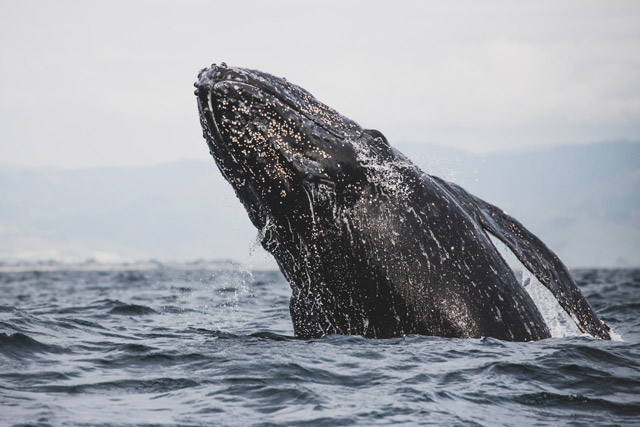
- Behavior: Famous for their acrobatic displays, humpbacks often breach (leap out of the water) and slap their tails or pectoral fins on the surface.
- Best Time to See Them: Most active in July and August.
Fun Fact
Humpback whales can travel up to 16,000 miles round trip each year during migration, one of the longest migrations of any animal!
Minke Whales
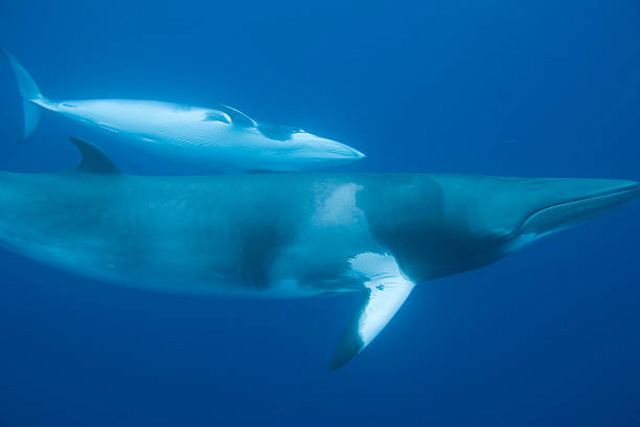
- Behavior: Smaller and more elusive than humpbacks, minkes are often seen swimming at a brisk pace through the water.
- Best Time to See Them: Spotted sporadically throughout the season, with higher chances in peak summer months.
Fun Fact
Minke whales can hold their breath for up to 20 minutes while diving for food.
Fin Whales
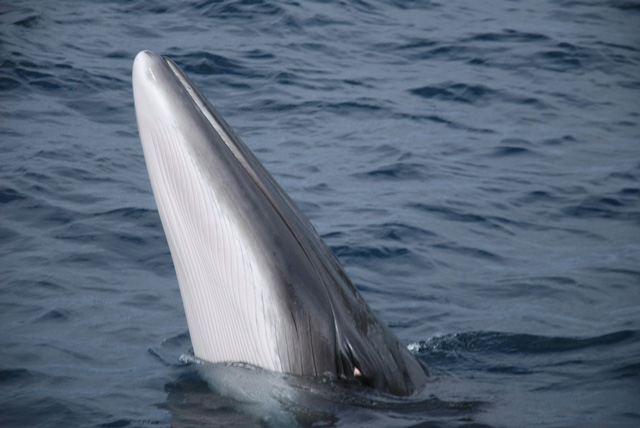
- Behavior: These graceful giants are often seen gliding at the surface, occasionally spouting water up to 20 feet high.
- Best Time to See Them: Frequently seen from July through September.
Fun Fact
The fin whale is the second-largest whale species, measuring up to 85 feet in length!
Dolphins
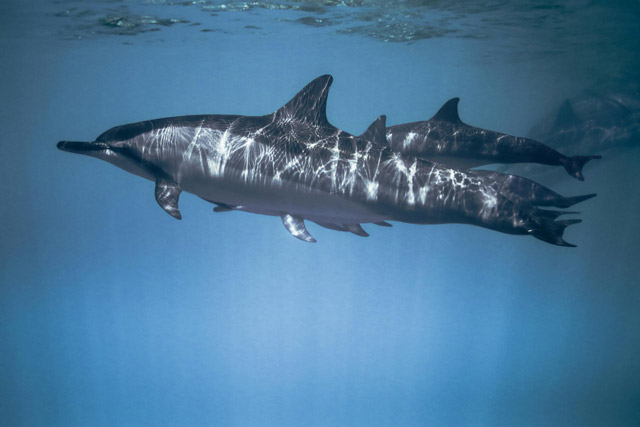
- Behavior: Playful and social, dolphins often approach boats. This makes them a favorite among whale watchers, even though they aren’t technically whales.
- Best Time to See Them: Active year-round but most commonly spotted during peak whale season.
Fun Fact
Dolphins communicate using a series of clicks and whistles that are unique to each pod.
Whale watching during the best time to see whales in Montauk offers a mix of breathtaking species that will leave you in awe.
Why Is Montauk Great for Whale Watching?
Montauk’s location, where the Atlantic Ocean meets Long Island Sound, creates the perfect conditions for marine life. The warm Gulf Stream currents bring in schools of fish, while colder waters provide rich nutrients. This combination draws whales to feed, making Montauk a hotspot for whale watching tours.
Tips for Your Whale Watching Adventure
- Choose a Top-Rated Tour Operator
Book with a company known for successful sightings. Viking Fleet and other Montauk-based operators offer expert guides who know the ideal spots to go during the best time to see whales in Montauk. - Bring the Right Gear
- Binoculars to spot distant whales.
- Camera with a zoom lens for close-ups.
- Comfortable clothing in layers for changing weather.
- Plan Your Trip Around Peak Months
June through October is when you’re most likely to see whales. Booking a tour during these months increases your chances of an unforgettable experience. - App Recommendations: Use apps like “Marine Traffic” to track nearby vessels and “Whale Alert” to understand regulations and potential sightings. Both apps are available for Apple IOS and Android.
- Photography Advice: Use a telephoto lens (200mm or higher) for detailed shots. Keep your camera on burst mode to capture quick movements.
- Food and Drinks: Pack snacks and reusable water bottles, as some tours may not have refreshments available.
Fun Facts About Whales Near Montauk
Did you know that:
- Humpback whales can consume up to 3,000 pounds of fish a day?
- Montauk is one of the best whale watching destinations on the east coast of the U.S. because of its proximity to feeding grounds?
- Fin whales are sometimes called “razorbacks” because of their sleek dorsal fin?
- The patterns on a humpback whale’s tail are as unique as fingerprints, helping researchers identify individual whales?
- Some types of whales can hold their breath for up to 90 minutes, but most surface every 10-15 minutes to breathe?
Sharing these tidbits with friends or family will make your adventure even more fun!
What Weather Conditions Are Ideal for Whale Watching?
Whale sightings can be affected by weather and sea conditions. Here are some tips for choosing the best kind of day for your tour:
- Calm Seas: Flat or mildly choppy waters make it easier to spot whales and enjoy a smoother ride.
- Sunny or Overcast Days: While sunny weather makes for beautiful photos, overcast days can reduce glare on the water, improving visibility.
- Wind Conditions: Avoid windy days as rough seas make it harder to spot spouts or dorsal fins.
Stay Eco-Friendly While Whale Watching
As someone who loves whales, I always try to protect their environment. Here’s how you can do the same:
- Choose Responsible Tours: Look for operators who follow whale watching regulations, like keeping a safe distance from the animals.
- Reduce Plastic Waste: Bring reusable water bottles and snack containers instead of single-use plastics.
- Support Conservation Efforts: Some tours donate to organizations that help protect whales and their habitats.
By taking these small steps, you’ll ensure that Montauk remains one of the best places to go whale watching for years to come.
Make Montauk Your Next Whale Watching Destination
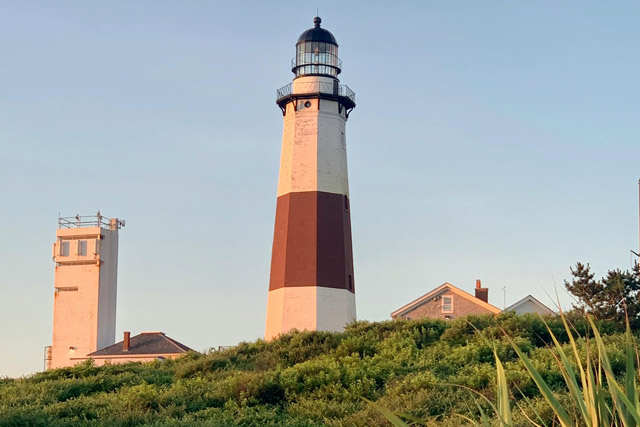
Seeing whales in Montauk is more than just an activity; it’s an experience that stays with you forever. The thrill of spotting humpback whales breaching, the serenity of being on the water, and the chance to connect with nature make Montauk a special place.
If you’re ready for your next adventure, now’s the perfect time to start planning your trip. Book a tour during the best time to see whales in Montauk, grab your gear, and prepare for a journey you’ll never forget.

